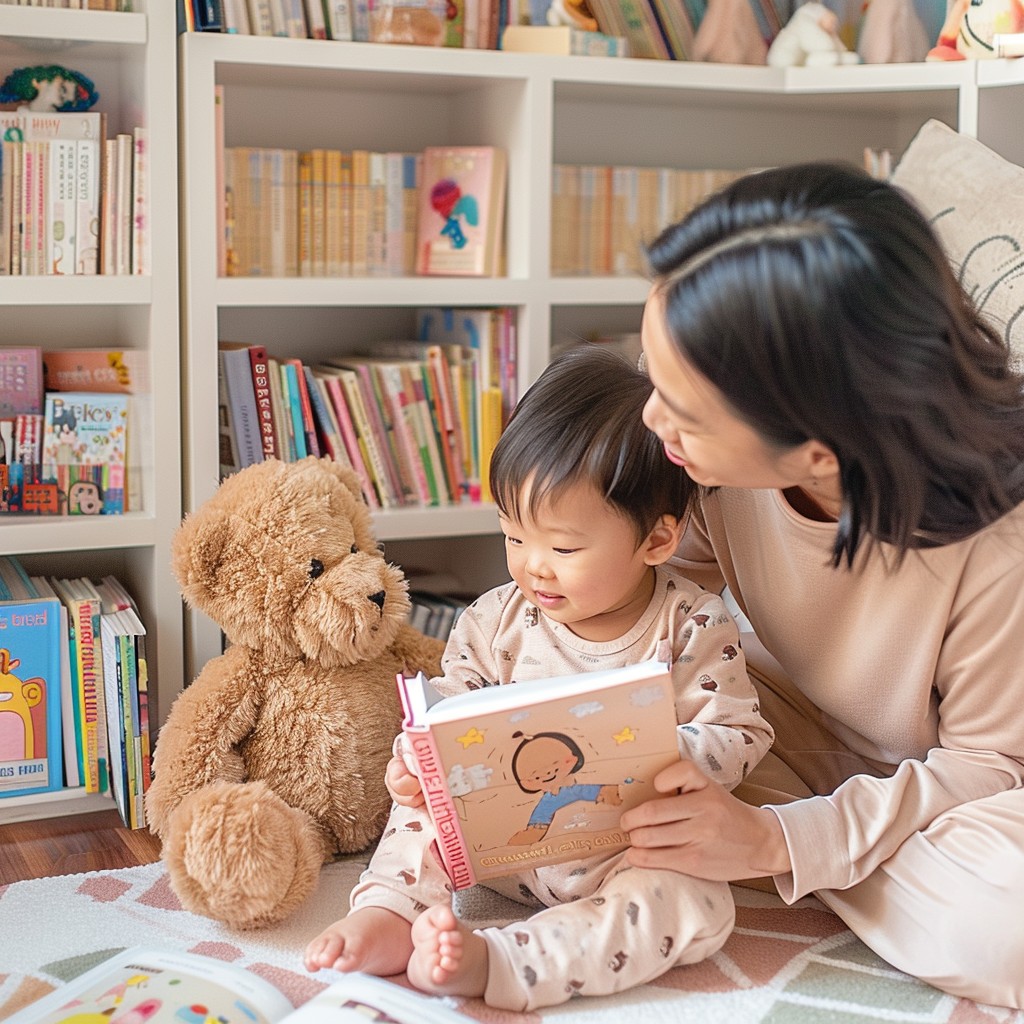When it comes to farmhouse garden design, it’s all about creating that perfect blend of rustic charm and timeless elegance. Imagine stepping into a space filled with soft pastels, earthy tones, and a splash of bold reds or blues. These colors not only bring warmth and comfort but also seamlessly connect your garden with the surrounding nature, making it feel like an extension of your home.
The choice of colors is significant in farmhouse garden design. Pastel shades like soft pinks, gentle greens, and muted yellows add a serene and calming vibe, while earth tones such as browns and beiges provide a solid foundation that grounds the space. A dash of bold reds or blues can add that bit of spice that sets your garden apart, giving it a unique personality.
Patterns play a big role too. Think gingham plaid and classic checks – they’re the farmhouse staples you’ll love. These patterns evoke a sense of nostalgia and simplicity, reminding us of the cozy, welcoming nature of country living. You might incorporate these patterns into your garden cushions, tablecloths, or even plant pots to tie everything together.
But here’s a tip: steer clear of modern patterns like chevron or stripes. They might look chic, but they can mess with the old-world charm we’re going for. Remember, the goal is to create a harmonious space that feels inviting and genuine. Stick with classic patterns that resonate with the farmhouse aesthetic, and you’ll be well on your way to designing a garden that’s as beautiful as it is welcoming.
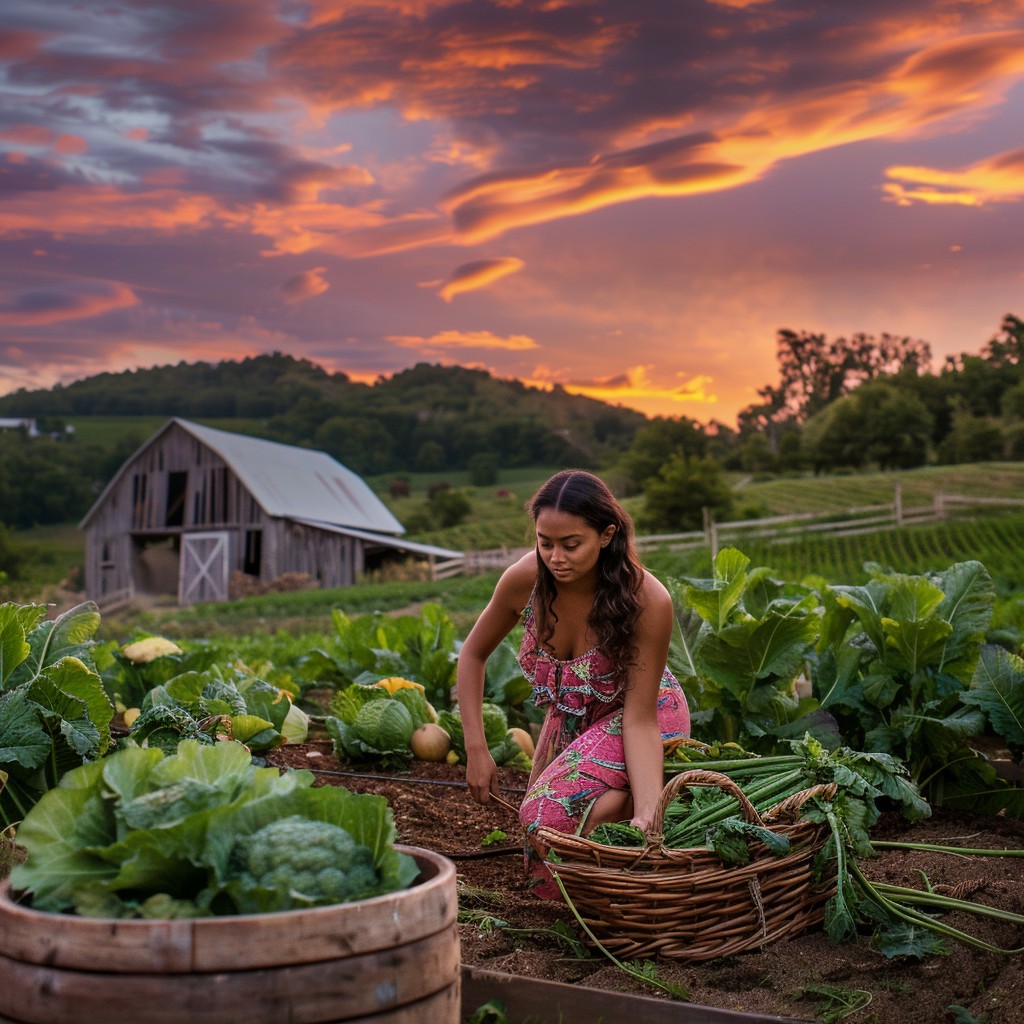
Using Natural Stones and Paving for Authenticity
In a farmhouse garden, natural elements are the stars of the show. Imagine a charming stone pathway winding through lush greenery – it’s the perfect way to enhance that countryside feel and invite a sense of tranquility into your space. Natural stone paving is not only durable but also incredibly beautiful, offering a touch of elegance that’s hard to match.
Opt for stones in lighter hues to keep things looking airy and welcoming. Shades like cream, beige, and soft gray complement the garden’s natural surroundings and maintain a cohesive look. The irregular shapes of natural stones add a lovely organic touch, making your garden feel like it’s been kissed by nature itself. There’s something truly special about a garden path that doesn’t follow straight lines – it whispers of adventures and hidden nooks waiting to be discovered.
Limestone, sandstone, and slate are all excellent choices for a farmhouse garden. Limestone provides a classic look with its subtle color variations and smooth texture. Sandstone, with its rugged, earthy appearance, gives a more rustic feel, while slate offers a sophisticated elegance with its rich tones and natural sheen.
And don’t worry about making everything perfect; a bit of imperfection adds character and authenticity to your design. Let the stones guide you as you create winding paths, charming patios, or natural borders that frame your flower beds. Your garden will feel like it has evolved over time, embracing the imperfect beauty that only nature can offer.
Choosing the Right Plants and Flowers for a Farmhouse Feel
No farmhouse garden is complete without an abundance of flowers and plants. The idea is to create a space that feels vibrant yet effortlessly charming, where nature thrives in all its glory. Picture this: a mix of butterfly bushes, daisies, and lavender gently swaying in the breeze, filling the air with their delightful fragrance.
When choosing plants, focus on those that exude farmhouse charm. Daisies are a classic choice with their simple beauty and cheerful blooms. Lavender adds a touch of elegance with its soothing scent and vibrant purple hues. Hydrangeas, with their lush clusters of flowers, provide a splash of color and texture, while butterfly bushes attract pollinators, bringing life and movement to your garden.
But it’s not all about flowers. You can also bring some practical magic by growing vegetables like tomatoes, carrots, and onions – fresh from your garden to your table! Incorporating edible plants adds functionality to your garden, allowing you to enjoy the fruits (and vegetables) of your labor.
When planting flowers, embrace a relaxed arrangement rather than perfectly aligned rows. This will give your garden a delightful, lived-in look, as if it’s been cultivated over time with love and care. Allow plants to intermingle and create their own harmonious tapestry of colors and textures.
Remember to consider the light requirements for each plant to ensure they thrive in their new home. Some plants may prefer sunny spots, while others thrive in shaded areas. Pairing plants with similar light and water needs will help them grow healthily and create a cohesive garden design.
Installing a Classic White Picket Fence for That Quintessential Look
Ah, the iconic white picket fence! It’s a classic symbol of farmhouse charm that instantly adds a touch of nostalgia to your garden. Picture this: a beautifully painted white picket fence bordering your lush garden, perfectly capturing that quintessential farmhouse vibe. It not only enhances the visual appeal but also serves practical purposes like defining boundaries and keeping your plants safe from unwanted visitors like nosy deer or enthusiastic pets.
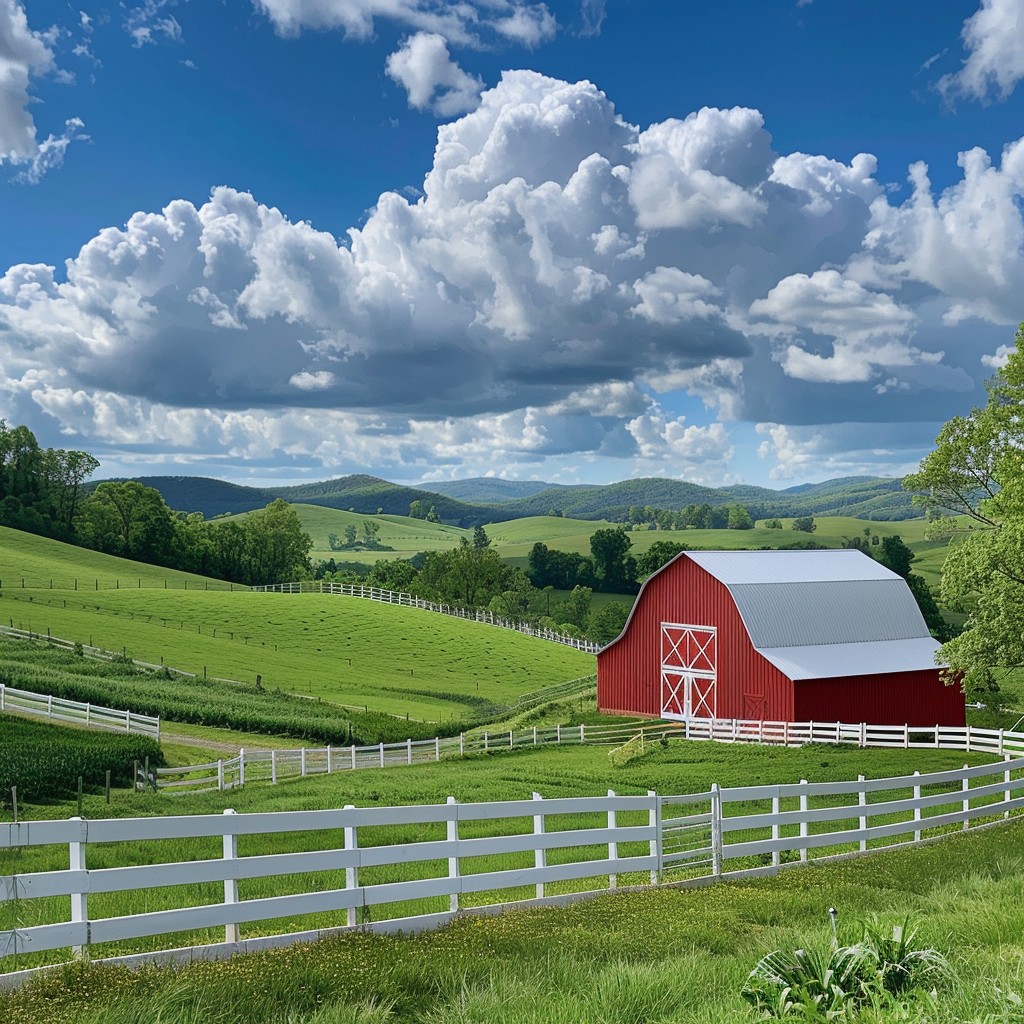
The Visual and Practical Benefits of a White Picket Fence
The aesthetic appeal of a white picket fence is unmatched. It creates a charming backdrop that complements the greenery and blooms of your farmhouse garden, making everything pop. But beyond looks, this fence serves a functional purpose. It helps outline your garden area, creating a sense of space and organization. Plus, it offers some protection against curious critters, ensuring your carefully planted veggies and flowers remain undisturbed.
Cost Considerations and DIY Options for Installing a Fence
Now, let’s talk about the cost. Installing a white picket fence might seem like a big investment, but it’s one that pays off in spades when it comes to creating a cohesive farmhouse look. If you’re budget-conscious, there are plenty of DIY options available. You can find pre-made picket fence panels at most home improvement stores, which makes installation a lot easier. If you enjoy woodworking, building your own fence from scratch can be a rewarding project.
To keep costs down, consider using durable materials like vinyl, which mimics the classic wooden look but requires less maintenance over time. Vinyl fences are resistant to rot and insects, making them a long-lasting choice for your farmhouse garden.
Maintenance is key to keeping your white picket fence looking pristine. A fresh coat of paint every few years will keep it bright and clean, preserving that charming appeal. Regularly inspect for any damage or signs of wear, like loose boards or chipped paint, and address these issues promptly. Cleaning the fence with mild soap and water will help remove dirt and grime, ensuring it always looks its best..
Selecting Lawn Furniture That Compliments Your Farmhouse Garden
Your farmhouse garden isn’t just about looking pretty – it’s a place to relax and enjoy the outdoors. That’s where the right lawn furniture comes in. Imagine yourself sipping iced tea on a sunny afternoon, surrounded by the soothing sights and sounds of your garden. To make this vision a reality, you’ll want to choose furniture that compliments your farmhouse theme while providing comfort and functionality.
Recommended Materials for Farmhouse-Style Lawn Furniture: Wood, Wicker, and Cast Iron
When it comes to farmhouse-style lawn furniture, materials matter. Look for pieces made from light wood or wicker to keep things looking natural and cohesive. Light wood, such as cedar or pine, has that rustic appeal and can be stained or painted to match your garden’s color palette. Wicker furniture adds a touch of vintage charm and is perfect for creating cozy seating areas.
Don’t shy away from cast iron furniture either; it’s durable and fits right in with the farmhouse aesthetic. Cast iron tables and chairs offer sturdiness and elegance, making them ideal for outdoor settings where you can enjoy meals or read a good book.
Furniture Ideas for Different Purposes: Dining, Lounging, and Entertaining
Selecting the right furniture depends on how you plan to use your garden space. For dining, a classic picnic table or a long farmhouse-style table with benches is perfect for family gatherings and entertaining friends. These setups encourage communal dining and add a casual yet sophisticated touch to your outdoor space.
For lounging, consider setting up a cozy corner with a pair of wicker armchairs and a small side table. Add some throw pillows and a soft blanket for those chilly evenings. You could also opt for a cast iron swing bench or a hammock for those lazy afternoons when you just want to relax and enjoy the view.
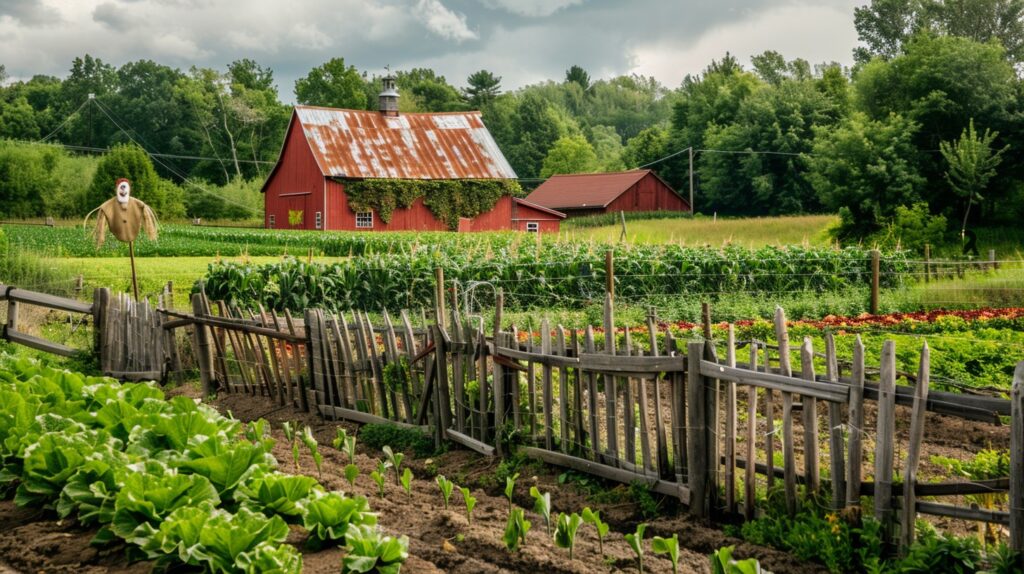
Tips for Selecting Weather-Resistant and Durable Pieces
When choosing outdoor furniture, durability is key. Weather-resistant materials like treated wood, powder-coated metal, and synthetic wicker are excellent choices for withstanding the elements. Look for cushions made from fade-resistant and water-repellent fabrics to ensure they last through various seasons.
To extend the life of your furniture, consider investing in covers or storing pieces indoors during harsh weather. Regular maintenance, such as cleaning and treating surfaces, will keep everything looking fresh and inviting.
Designing Cozy Garden Pathways for Exploration
A farmhouse garden wouldn’t be complete without pathways that invite exploration and curiosity. These winding trails can lead you through the beauty of your outdoor space, creating a sense of journey and discovery as you stroll through your garden. Designing pathways is an art that adds another layer of charm to your farmhouse garden.
When it comes to designing pathways, the material you choose can make a big difference in how your garden feels. Natural stone, gravel, or even wood chips can create beautiful, rustic paths that blend seamlessly with the surroundings. Natural stone, such as flagstone or cobblestone, offers durability and elegance, while gravel paths provide a more relaxed, informal feel.
If you prefer a softer underfoot experience, consider using wood chips or mulch. These materials create a warm, earthy vibe and are often more cost-effective than stone. The key is to choose materials that complement the overall aesthetic of your garden while providing functionality.
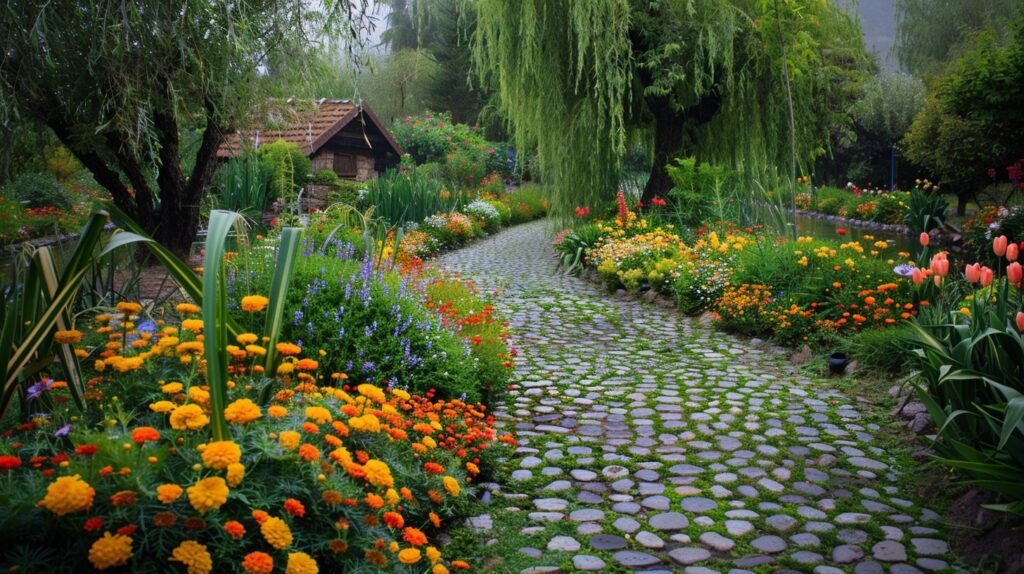
Design Tips for Creating Inviting Pathways
Designing pathways is more than just laying down materials; it’s about creating an experience. To make your garden paths inviting, consider incorporating gentle curves and varied widths. This approach mimics natural trails and adds a sense of whimsy to your garden. Avoid straight lines, as they can feel too formal and disrupt the farmhouse charm.
Enhance the paths with borders of low-growing plants or flowers to define the edges and add bursts of color. Consider adding stepping stones with personalized engravings or fun designs for an unexpected touch. Lighting is also crucial; solar-powered lights can illuminate the way and make evening strolls magical.
Creating Focal Points Along the Pathways
A well-designed pathway should lead visitors to points of interest, encouraging exploration and interaction with the garden. Create focal points by placing benches, garden sculptures, or water features along the way. These elements invite pauses and reflection, turning a simple walk into a delightful experience.
Consider placing arbors or trellises at pathway entrances to create inviting gateways. These structures can be adorned with climbing plants like roses or wisteria, adding height and drama to your garden. By creating focal points, your pathways become not just routes but integral parts of your garden’s story.
Adding Rustic Yard Ornaments and Decoration to Personalize Your Space
Decorating your garden is like adding the final brushstrokes to a masterpiece. Yard ornaments and decoration play a huge role in bringing your farmhouse garden to life. With the right mix of vintage items and rustic charm, you can create a space that’s both unique and personal.
Start by looking for vintage-looking items that echo the past. Imagine old wagon wheels leaning against a tree or weathered ladders adorned with climbing plants. These timeless pieces add a sense of history and character to your garden.
Upcycled treasures are another great way to personalize your space. Think about repurposing old gardening tools as quirky plant hangers or transforming an antique watering can into a charming flower pot. These items not only add charm but also speak to the resourcefulness inherent in farmhouse design.
Barnwood Accents and Rustic Materials
Barn wood is another fantastic option for adding texture and warmth to your garden. This weathered wood brings an authentic rustic feel that complements any farmhouse theme. Consider using barnwood to build garden borders, create raised beds, or even craft a rustic bench for a cozy seating area.
Incorporating natural materials like stone, metal, and aged ceramics can further enhance the rustic appeal. An old galvanized metal bucket can become a lovely planter, and a vintage ceramic birdbath can serve as a focal point.
Ideas for Incorporating Lighting: String Lights, Lanterns, and Solar Lights
Lighting is key to creating an enchanting atmosphere in your garden, especially when the sun sets. String lights draped around trees or along the fence add a whimsical touch, transforming your garden into a magical place to unwind.
For a more traditional look, consider using lanterns placed strategically around your garden. These can be either candle-lit or solar-powered, providing a warm and inviting glow. Solar lights along pathways and borders are not only energy-efficient but also add a modern touch without detracting from the farmhouse charm.
Balancing Decor with Natural Elements for a Harmonious Look
When adding decor, it’s essential to strike a balance between man-made ornaments and natural elements. Too many decorations can overwhelm the space, while too few might leave it feeling sparse.
Mix your decor with natural features like plants, rocks, and water elements to create a harmonious look. Use ornaments to highlight certain areas without overpowering the overall design. A well-placed statue or a strategically hung wind chime can add interest and personality without stealing the spotlight from the natural beauty of your garden.
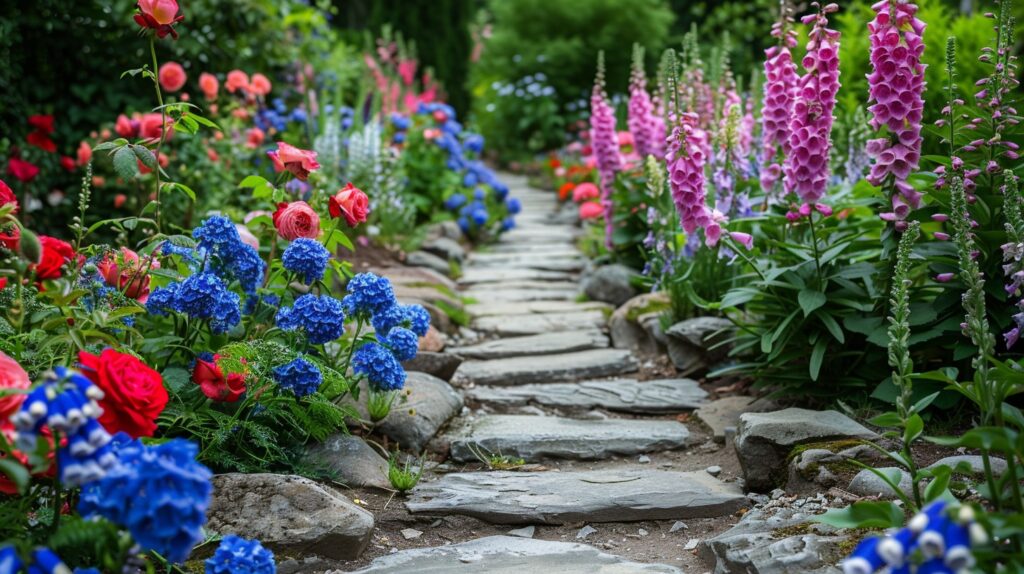
Designing Play Areas for Family Fun and Entertainment
A farmhouse garden isn’t just about aesthetics – it’s also a space for joy and play. Whether you have kids, pets, or simply enjoy outdoor games yourself, incorporating play areas adds an element of fun to your garden. By creating designated spaces for play, you can make your garden a true extension of your home, providing endless opportunities for family fun and entertainment. Consider setting up classic games like horseshoes or cornhole. These simple yet engaging games are perfect for family gatherings or a relaxing afternoon with friends. A horseshoe pit can easily be incorporated into your garden’s design, while a cornhole set can be stored away when not in use.
For a more permanent setup, you might want to install a shuffleboard court or bocce ball area. These games add a touch of sophistication while keeping the entertainment factor high.
Creating Play Areas for Kids
If you have children, designing play areas specifically for them can make your garden more family-friendly. Consider building a sandbox or a small wooden playhouse tucked among the trees. These elements provide safe and engaging spaces for kids to explore and enjoy.
A tree swing or a rope ladder can add adventure for the little ones, while a mini vegetable patch gives them the chance to learn about gardening firsthand. Encouraging children to interact with nature not only keeps them entertained but also fosters a love for the outdoors.
Pet-Friendly Zones
Don’t forget about your furry family members! Creating pet-friendly zones within your garden ensures that your four-legged friends have space to roam and play. Install a dog run or a digging area where pets can indulge their instincts without disturbing your carefully planted flowers.
Consider adding water features like a small pond or fountain that doubles as a drinking spot for pets, especially during warm summer days.
Enhancing Usability and Aesthetic Appeal
Integrating play areas doesn’t mean sacrificing the beauty of your garden. With thoughtful design, you can blend these elements seamlessly into the landscape. Use natural materials to build play structures that complement the farmhouse aesthetic, and position them in areas that don’t disrupt the garden’s flow.
By incorporating play spaces, you’re not only enhancing the usability of your garden but also adding to the traditional farmhouse feel. It becomes a lively and engaging space where everyone can find something to enjoy.
Incorporating Water Features for Serenity and Relaxation
Imagine walking through your farmhouse garden and hearing the gentle sound of flowing water. Water features are an incredible way to add tranquility and a sense of relaxation to your outdoor space. Whether it’s a small fountain, a bubbling brook, or a simple birdbath, water features can transform your garden into a peaceful retreat.
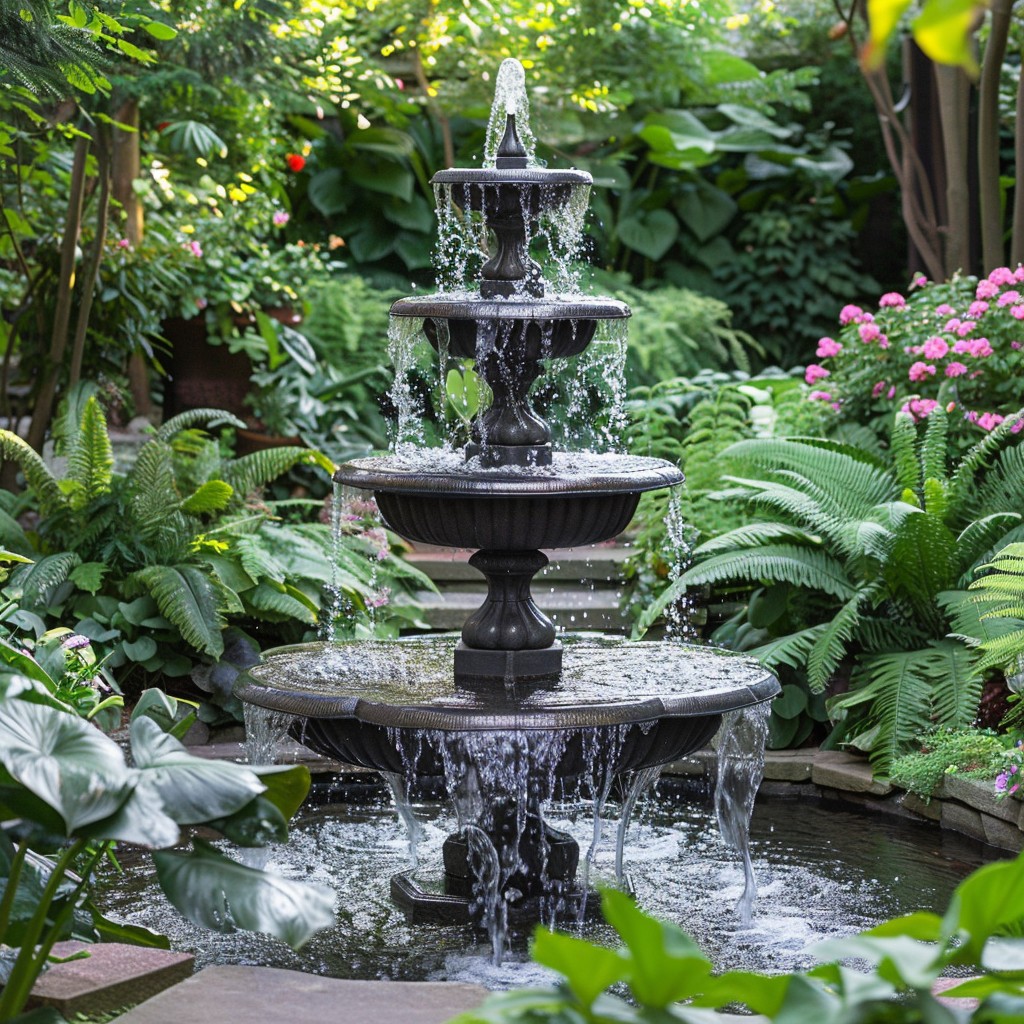
Choosing the Right Water Feature
When it comes to choosing the perfect water feature for your farmhouse garden, think about the size and style that will best fit your space. A rustic stone fountain or a reclaimed metal watering can turned into a fountain can add that perfect touch of farmhouse charm. Small ponds are also a great option, providing a home for fish and aquatic plants, which adds to the biodiversity of your garden.
If you’re working with a smaller space, consider installing a wall-mounted water feature or a tabletop fountain. These options still provide the soothing sounds of water without taking up too much space.
Location and Installation
The location of your water feature is key. Choose a spot that is easily accessible and visible from different angles in your garden. This will ensure that the calming effects of the water are enjoyed throughout your space. Installation can range from simple DIY projects to more complex setups that might require professional help, especially if you’re dealing with electricity or plumbing.
Don’t be afraid to get creative with your water feature’s placement. You might want to nestle it among lush greenery or make it the focal point of your garden. Use natural stones and plants around the feature to blend it seamlessly with the rest of your garden.
Enhancing the Aesthetic with Plants and Stones
Surround your water feature with a mix of plants to create a natural look. Ferns, hostas, and other moisture-loving plants thrive near water and add lushness to the setting. Incorporating stones and pebbles around the base of your water feature can enhance its natural appeal and prevent splashing.
Lighting can also elevate your water feature, especially in the evening. Solar-powered lights or LED spotlights can highlight the water’s movement and add a magical glow to your garden at night.
Building a Vegetable and Herb Garden for Practical Beauty
Farmhouse gardens are not only about aesthetics; they’re also about practicality. One of the best ways to merge beauty with utility is by incorporating a vegetable and herb garden. Picture fresh tomatoes, fragrant basil, and crisp lettuce right at your fingertips. It’s not just a garden; it’s your personal farm-to-table experience.
Selecting the Right Vegetables and Herbs
When selecting plants for your vegetable and herb garden, consider what you and your family love to eat. Start with easy-to-grow vegetables like tomatoes, zucchini, and peppers. For herbs, try classics like basil, rosemary, and thyme, which are not only useful in the kitchen but also offer lovely aromas.
Don’t forget about incorporating some heirloom varieties. They provide unique flavors and are often more resilient to pests and diseases. Plus, their history and traditional growth methods tie beautifully into the farmhouse theme.
Designing Your Vegetable and Herb Garden
When designing your vegetable and herb garden, think about accessibility and layout. Raised beds are a fantastic option as they are easier to manage and look aesthetically pleasing. They also help with drainage and keep pests at bay. You can build them from reclaimed wood to add a rustic touch.
For those with limited space, consider vertical gardening. Use trellises and tiered planters to grow climbing plants like cucumbers and peas. This maximizes space and creates an attractive, layered look.
Remember to rotate crops each season to maintain soil health and prevent disease. Companion planting, where you pair compatible plants together, can also boost growth and deter pests naturally.
The Joy of Fresh Produce
Growing your own vegetables and herbs is incredibly rewarding. Not only do you get fresh produce, but you also gain a sense of accomplishment from nurturing plants from seed to harvest. It’s a fulfilling process that connects you to the land and provides healthy, homegrown food for your family.
Engage children and family members in the gardening process as well. It’s a wonderful way to teach them about sustainability, responsibility, and the joys of eating what you grow.
Conclusion
Designing a farmhouse garden is about more than just following a theme – it’s about creating a space that reflects your personality and offers a serene escape from the hustle and bustle of daily life. It’s your personal slice of tranquility where you can unwind, connect with nature, and even grow your own food.
By incorporating these farmhouse elements and tips, you can design a garden that’s both functional and enchanting. From rustic decor to playful family areas and the practical charm of a vegetable patch, every element works together to create a harmonious and welcoming space.
Remember, it doesn’t have to be overwhelming. Start small, enjoy the process, and watch as your garden transforms into a charming haven you’ll love spending time in. Let each step be a part of your journey towards crafting the perfect retreat. Whether you’re a seasoned gardener or just starting, there’s no rush. Your farmhouse garden is a living, evolving space that grows with you.
So grab your gardening gloves, feel the earth between your fingers, and start creating the farmhouse garden of your dreams! 🌻
Here’s to many peaceful mornings, joyful family gatherings, and bountiful harvests in your beautifully designed farmhouse garden. Happy gardening! 🌿🌼
4o

